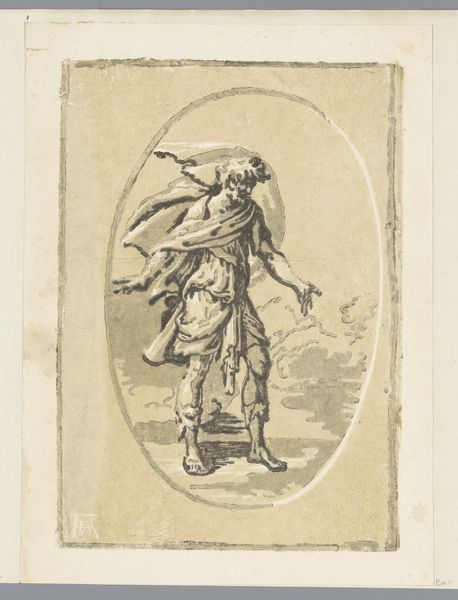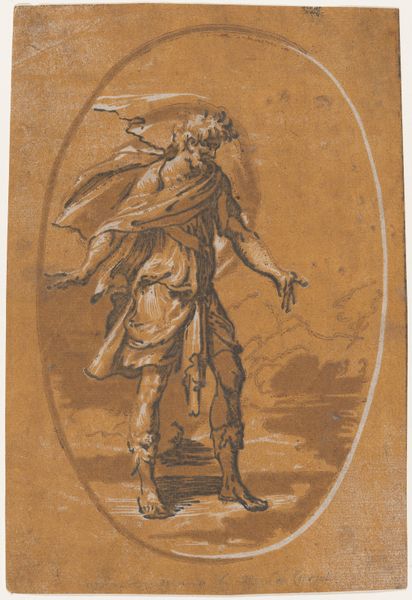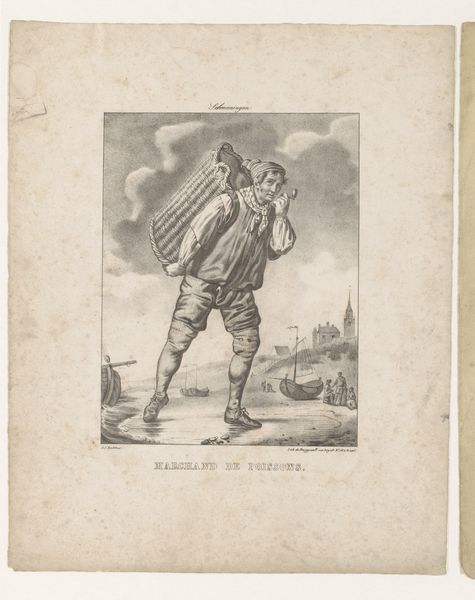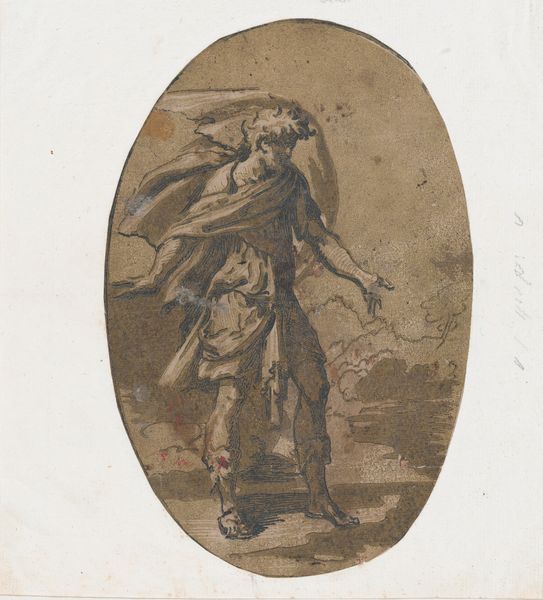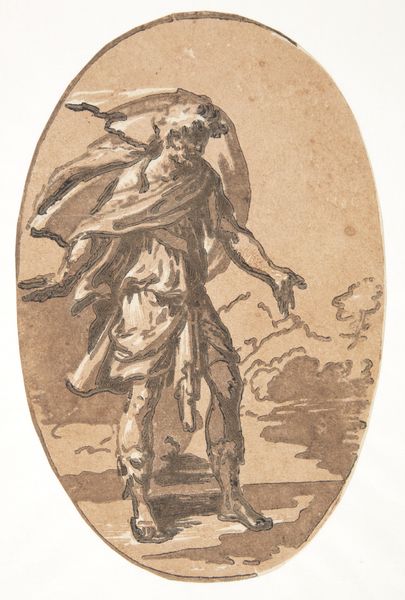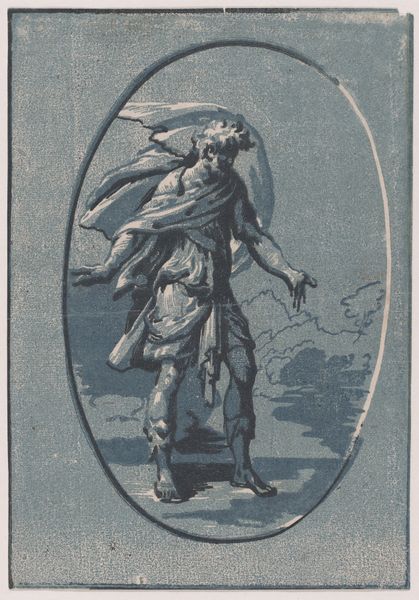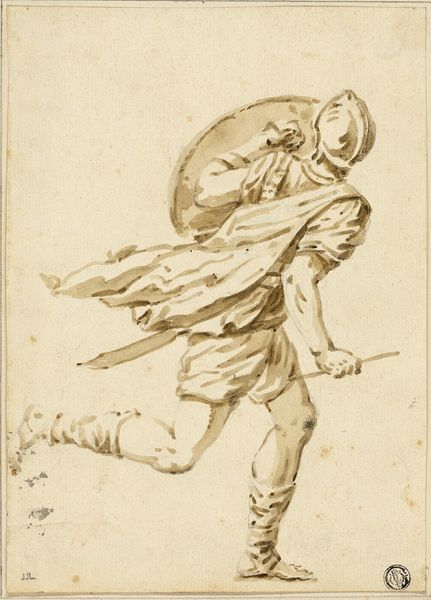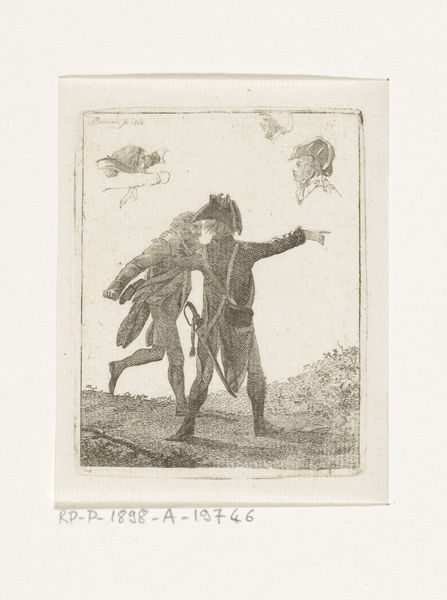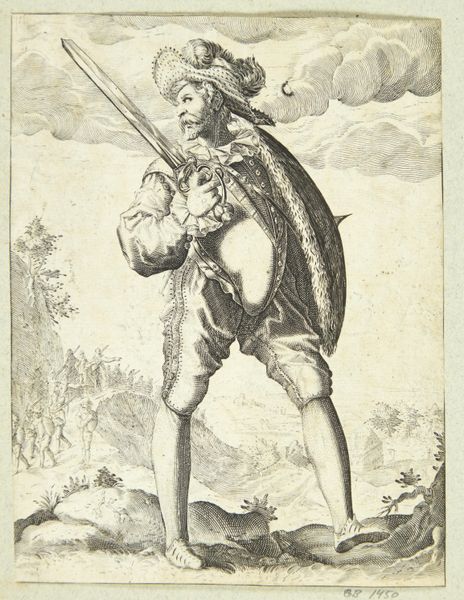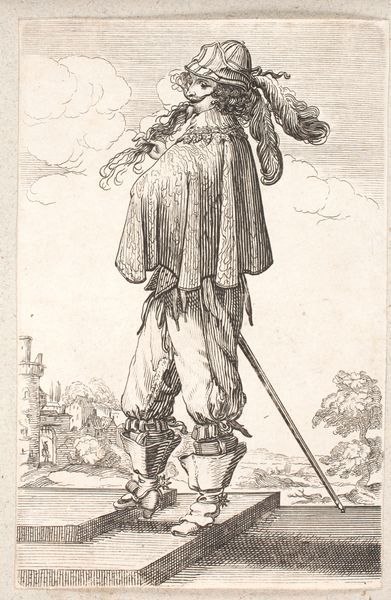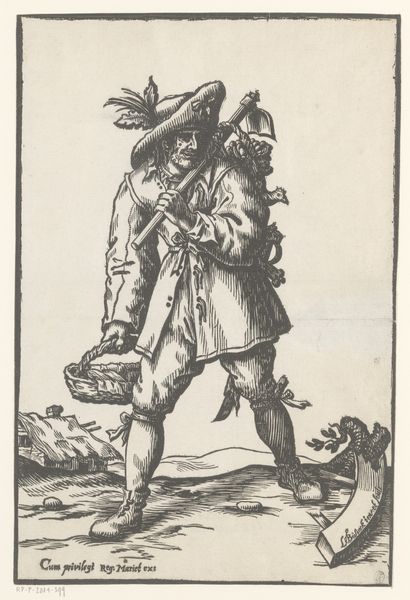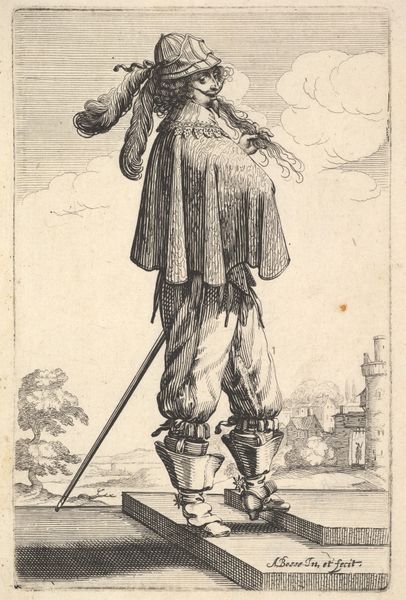
drawing, coloured-pencil, print
#
portrait
#
drawing
#
coloured-pencil
# print
#
figuration
#
coloured pencil
#
italian-renaissance
Dimensions: Sheet: 10 13/16 × 7 9/16 in. (27.5 × 19.2 cm)
Copyright: Public Domain
Editor: Here we have Niccolò Vicentino’s “Olympus (Surprise)”, created sometime between 1535 and 1545. It’s a coloured pencil drawing, or rather a print, from that medium. It's giving me a sense of classical art meets the dynamism of the Renaissance. How do you interpret this work, particularly within its historical context? Curator: This print offers a fascinating lens through which to view Renaissance ideas about power and representation. It is titled ‘Olympus’ and invites questions about authority, class, and who gets to inhabit those symbolic spaces. Consider, for instance, the figure’s pose and attire. Does it seem like the artist elevates or diminishes his subjects? Editor: He's partially draped and gesticulating outwards – maybe he's claiming territory? I hadn't considered a potential for class commentary. Curator: Exactly. The visual language of the time often codified social hierarchies, making pose and costume indicators of class. Also, what does it mean to portray a scene from Olympus with such earthly textures through a relatively accessible medium like printmaking? Editor: Is it a conscious attempt to bring down the Gods? A democratisation of the divine? Curator: Possibly, or perhaps to make commentary about earthly failings of leadership at the time, and insert new ones into older narratives? Does the surprise element invite us to reconsider those power dynamics, perhaps from a more critical or even satirical perspective? How might a contemporary audience view the piece through today’s politics of gender, race and class? Editor: Thinking about the ‘surprise’ element and current gender discussions, maybe Vicentino is prompting us to question who we expect to see in these positions of power, both then and now. Curator: Precisely! These historical echoes can enrich contemporary debates. Understanding the visual codes of the past allows us to deconstruct power structures today. Editor: Thanks, I hadn't looked at it from that point of view before. Now I’m eager to research social constructs of the era.
Comments
No comments
Be the first to comment and join the conversation on the ultimate creative platform.
